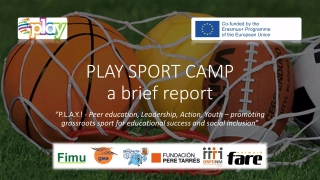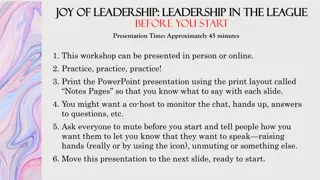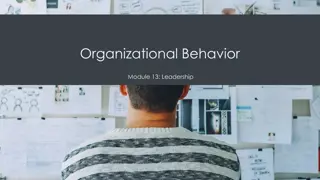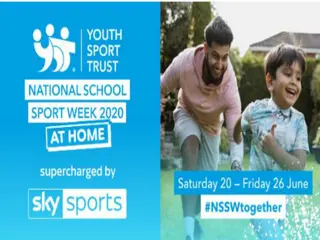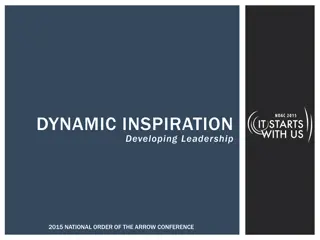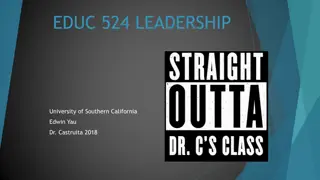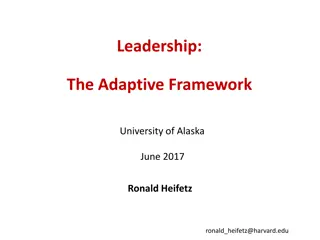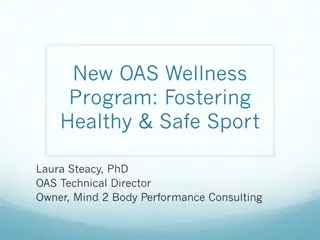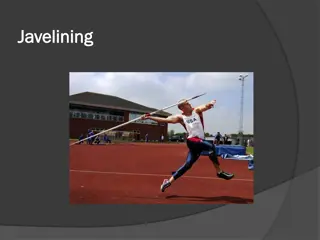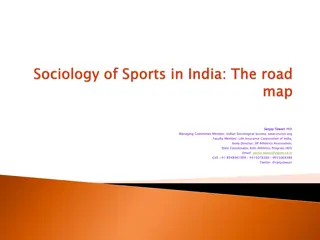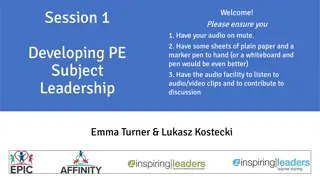Enhancing Leadership in the Sport Community During Challenging Times
The presentation explores the concept of versatile leadership in the sports community amidst the pandemic, emphasizing the need for a growth mindset, strategic planning, and enabling leadership. It encourages active stakeholder involvement, learning from experiences, and reimagining the future to maintain motivation and engagement. The call to action underscores autonomy, agency, and purpose as key drivers for moving forward proactively. Presenters offer valuable insights and resources for navigating these unprecedented times.
Download Presentation

Please find below an Image/Link to download the presentation.
The content on the website is provided AS IS for your information and personal use only. It may not be sold, licensed, or shared on other websites without obtaining consent from the author. Download presentation by click this link. If you encounter any issues during the download, it is possible that the publisher has removed the file from their server.
E N D
Presentation Transcript
Versatile Leadership: Keeping the Sport Community Engaged Colin C Guthrie, Ph.D. & Meghan Harlow, Ph.D. Mental Performance Consulting Group
The Sport Community Pandemic impacts all across the sport community; individual context is unique Balancing personal vs professional identities Perspective- what mindset do we need to adopt? How do we collectively stay motivated?
Adopting The Right Mindset Growth Zone, n.d.
Leadership Versatility Kaplan & Kaiser, 2006
Versatile Leaders- Enable What does it mean to be more enabling? Encourage input/contribution from all stakeholders - athletes, parents, coaches, board members, volunteers Learn from experiences- what worked and what didn t work? Opportunity to re-examine and re-leverage
Versatile Leaders- Strategic What does it mean to be more strategic? Move from pandemic planning towards future oriented- planning Opportunity to reimagine what we want return to sport to look like
Call to Action Autonomy and agency = motivation Purpose and Focus Unique position to plan ahead - what direction do we want to go? Now, new, next -McKinsey & Company, n.d.
P.A.N.D.E.M.I.C. Positivity Approach vs Avoidance Now / New / Next Developmental Empathy Model the way Innovate Context is the same and different
Presenters & Resources Colin Guthrie, Ph.D. colin@mpcg.ca www.mpcg.ca Follow-up Questions? Meghan Harlow, Ph.D. mharlow2@yorku.ca www.mpcg.ca Article - Changing the Game Project
Motivating Your Athletes During COVID-19 Fiona Meikle Mental Performance Consultant
Outline Awareness Of current training recommendations Of others Motivating your athletes Increasing engagement Online safety Additional resources
Awareness of Training Recommendations COPSIN Sport Medicine Advisory Committee: https://www.csiontario.ca/news/update-13-advisory-covid-19 At this time, all athletes (Summer and Winter sports) are strongly recommended to reduce training regimens, and instead exercise moderately in isolation from others to maintain general health, work on stability, core strength, fundamental movement quality, and so on. ..to address any known biomechanical and physical deficiencies that are easily addressed with home training and NOT to be attempting to reach peak performance this year.
Awareness of Others Health, physical and mental, need to come first Athletes are people, not robots Everyone s situation is different https://olympic.ca/2020/04/09/team-canada-partners-playing-their-part-to-plank-the-coronavirus-curve/
Motivation Both ends of the spectrum, and everything in between: From I don t have any motivation just now, I don t want to do any training and I don t know if I want to continue in this sport To I want to make the most out of this time. I want to train as much as possible so that I can be ahead of my competitors when we come back
Motivation Understanding your athlete s situation and levels of motivation is important as you won t know what they are experiencing unless you ask. Examples of how you can ask: What are your thoughts about the situation? What are your motivation levels like? Try to avoid: Asking questions that insinuate there is an issue. Instill panic when there is none. Letting your own personal experiences and situation influence others.
Motivation For those lacking motivation, let them know that it s ok. Examples of what you can say It s ok to not be motivated. You can afford to be demotivated right now.
Motivation For those with a lot of motivation and doing too much, ask them to slow down and put health first. Examples of what you can say: Right now, your health and the health of those around you is what is most important. Training will be about maintaining your health. Here are some examples of things we can work on
Increasing Engagement Barriers to engagement No support system Not around their teammates, coaches, staff, school friends Reduced communication No training or competitions, increased demands at home No place to connect No training, no school, no visiting friends Reduced Enjoyment Lack of team spirit, limited ability to train, having to train in the home
Increasing Engagement Overcoming the barriers Create a support system and establish communication Contact your athletes. Ask how they are doing and what they are experiencing. Connect with them via a platform with video rather than text message or e-mail (refer to Safe Sport guidelines and Rule of Two) Show empathy Empathy is like a muscle NPR Podcast The Hidden Brain You 2.0 The Empathy Gym https://www.npr.org/2019/07/22/744195502/you-2-0-the-empathy-gym AASP Article Improve Coaching Through Emotional Intelligence - https://appliedsportpsych.org/resources/resources-for-coaches/improved- coaching-through-emotional-intelligence/ Psychology Today Article The Emotionally Intelligent Coach - https://www.psychologytoday.com/ca/blog/the-coach-athlete- relationship/201411/the-emotionally-intelligent-coach
Increasing Engagement Overcoming the barriers Connect with them as a team for training Have team workouts Review video Have education sessions mental performance, nutrition etc. Provide guidance on how to train at home safely Give your athletes suggestions on how they can connect as a team Team challenges exercise, art, baking, etc. Team check ins Trivia nights using online platforms e.g. HouseParty app, Jackbox tv
Increasing Engagement and Motivation Go back to their Why Back to why they started playing that sport Back to basics Doing it for fun When my coach said that I only had to train to maintain my health I started enjoying training a lot more and I got a lot more out of my training sessions than I used to. It reminded me of why I got into the sport in the first place and I ended up wanting to do more than I did before going into self-isolation. You Tube video Michael Jr Know Your Why https://youtu.be/1ytFB8TrkTo When you know your Why, your What becomes more impactful Michael Jr
Online Safety When connecting with athletes using virtual platforms: Applying the Rule of Two in a Virtual Setting https://coach.ca/three-steps-responsible-coaching Canadian Centre for Child Protection Supporting you Through COVID-19 https://protectchildren.ca/en/resources-research/supporting-you-through-covid-19/
Additional Resources The COVID-19 Pandemic: Tips for Athletes, Coaches, Parents, and the Sport Community - https://appliedsportpsych.org/blog/2020/03/the-covid-19-pandemic-tips-for- athletes-coaches-parents-and-the-sport-community/ How Student-Athletes Can Cope With the Consequences of the Coronavirus (COVID-19) Pandemic. 4 Things You CAN do to Respond to the new (Ab)Normal https://www.cypherpsych.com/blog/coronavirus For Game Plan eligible athletes https://www.mygameplan.ca/news/COVID19Resources CSIO Resource Hub https://www.csiontario.ca/csio-resources/categories/health-wellness
E: Fiona.L.Meikle@gmail.com www.FionaMeikle.com


